Tips for enjoying the garden year round.

The garden has always been a major part of my life, having had grandparents and a parent who found endless enjoyment being green fingered.
At 80 my mum can still be found most days pottering in the garden, pruning her roses or doing some light weeding. Its her escape and a place she takes great comfort in being.
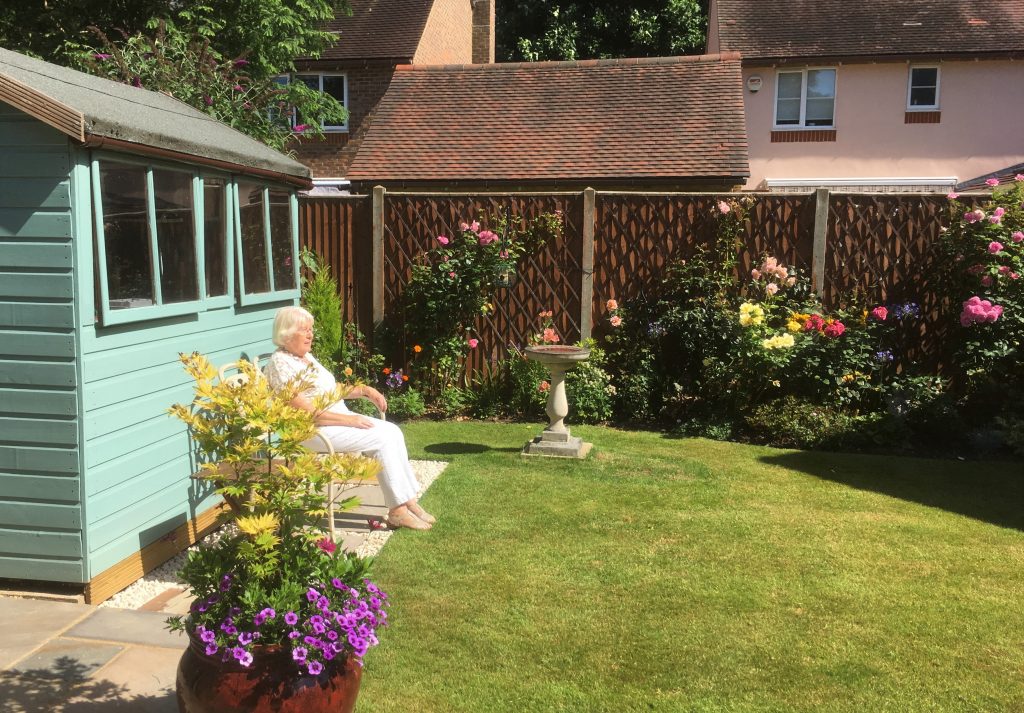
These days its a 2 woman job to keep it looking good, with a seasonal calendar of tasks to be completed, which we do together. I’m very good at taking instruction !
The garden can be a great place in which to engage those living with conditions such as memory loss, where families can join in shared activities, promoting inclusion and creating an environment of memory prompts. It is also a fantastic place to support physical and mental health all year round. Famous gardener Alan Titchmarsh is one advocate of the benefits of gardening and has worked with the Alzheimer’s society to encourage Garden centres become more accessible, for all.
How to create a garden for all seasons, plus ideas to get all the family involved:
Spring

Spring is one of my favourite seasons, after a long winter as bulbs start to bloom and the green tips of shrubs appear, its hard not to feel a sense of renewed optimism about the year ahead. Of course for all gardeners its one of the busiest times of year, deciding on what’s to be planted where, clearing away any remaining winter leaves and bringing on seedlings.
Top Tip #1 – Remember not to do too much all at once, as you will discover muscles you forgot you had!

- Its the perfect time to visit the garden centre for new bedding plants and seeds for sowing in pots or beds. When choosing plants for older family members, think about some of the traditional plants which will prompt memories, through feel and smell such as Lavender.
- Why not spend some time to make the garden more accessible, by thinking about adding in some raised beds or containers at different heights as well as a potting table. This will limit the amount of bending.
- Create a sensory section to the garden with bright colours, scented flowers, plants with movement such as grasses and varying textured leaves. The Sensory Trust have some great tips available for designing an under used outdoor space into a creative zone.
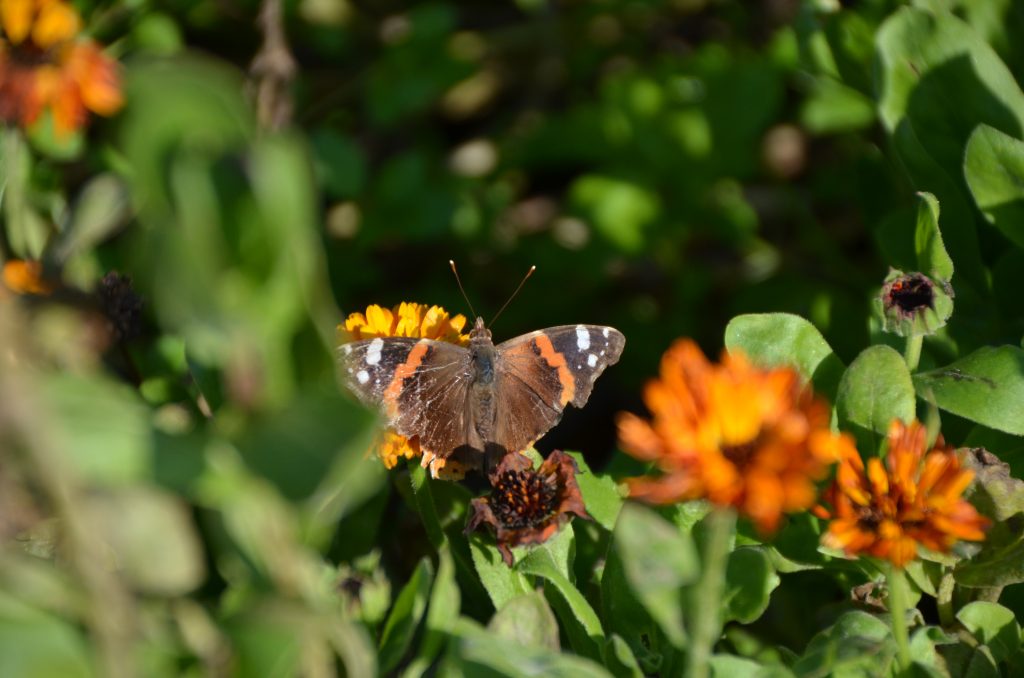
- Having a garden teaming with butterflies and busy bees is lovely to see, so to encourage wildlife into the garden during the summer, its worth looking out for bee and butterfly friendly annuals and wild flowers to sow or plant up.
- Work together to tidy up the borders from all the winter leaves, get some shape back into shrubs with light pruning, all ready for late spring planting of annuals and seedlings.
- Now is the time to rake the lawn of moss from the winter and give a first cut to the grass, once you are sure the frosts have gone.
- If the fences are in need of a paint job or repair, its best to do this now before the borders fill out with shrubs and perennials again.
- Organise the garden furniture so they are positioned in the bright corners of the garden for relaxing and watching nature or the family hard at work.
Top Tip #2 – Add trellis to fences to give height to climbers for greater coverage and minimise bending or use hanging baskets to brighten up empty spaces.
Summer
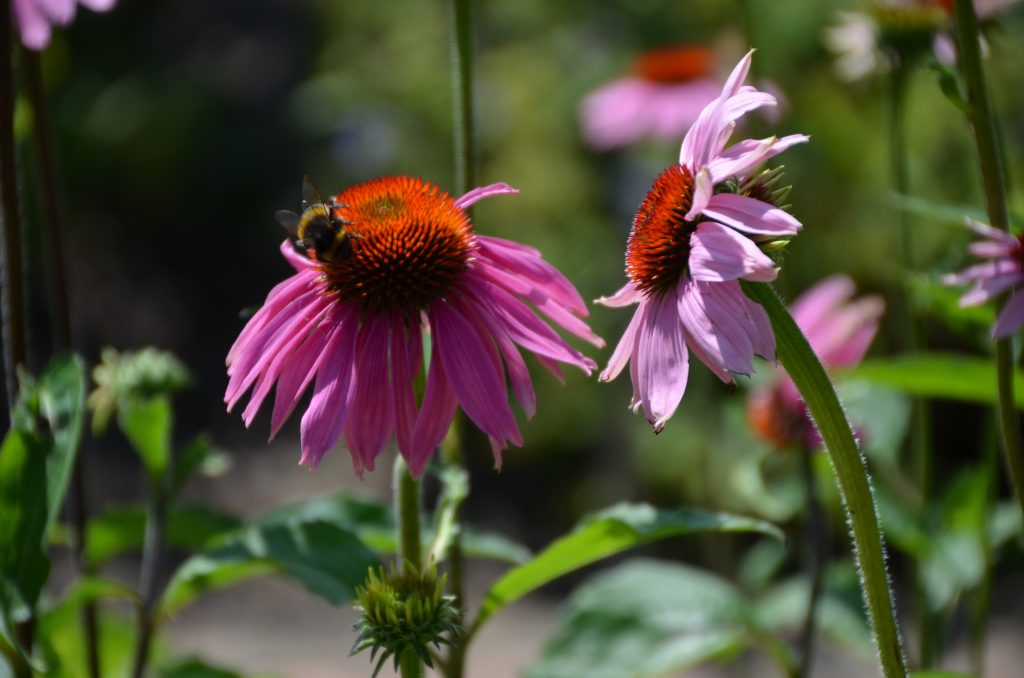
Whilst Spring maybe be high in physical activity, I find there is something very satisfying about seeing the garden in full bloom over summer. There are still plenty of things to be done together as the summer progresses, in order to keep flowering plants growing well into the late summer to give continuous colour.
Top tip #3 – Create a diary, picture book or memory box with objects from the garden, to share or discuss throughout the Autumn and Winter months, when you can’t get outside as much – this can be a fun activity to do with younger family members. For those living with memory loss, keep a note of plants which stimulate positive feelings and conversation, ready for replanting in the spring.
- The summer is also the perfect time to get out and about to visit local gardens and national trust properties for inspiration on planting schemes, new plants to add colour or simply take a relaxing stroll.

- Chatting about how the garden has transformed from Spring and what you have created together, is a positive way to engage older relatives often living at home alone. This can include talking about local gardens which have been visited, where favourite flowers can be an inspiration for next years planting.
- With hotter summers, it is an idea to plan in a shaded area out of the high afternoon sun for relaxing, this can be either created from planting of taller climbers or bamboo or using a canopy,
- Where time is a challenge there are options of having a low maintenance garden, using paved and gravel areas to reduce the amount of weeding, using larger terracotta pots which don’t dry out as quick and planting drought resistant shrubs to reduce the need for watering.
- Try adding a few veggies and fruit canes into the borders to provide fresh produce perfect for serving at outdoor family picnic’s or BBQ’s. Like Mint, Lemon Balm grows abundantly during the summer and is reputed to boost memory and makes for a refreshing drink.
Top tip #4 – Summer is a great time for taking photographs of the garden, ready to share to the Cognect Screen into the winter as a reminder of the achievements made!
Autumn
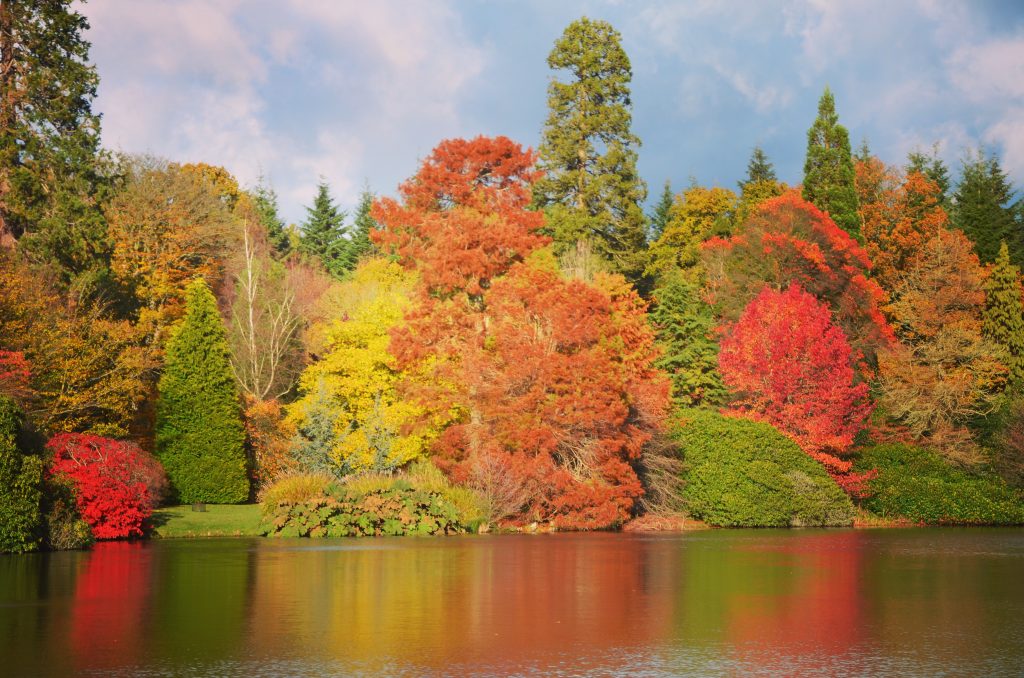
I always consider autumn to be about planning and preparation for next year. Whether its moving shrubs, taking out unwanted plants, storing Dahlia tubers or simply giving the place a good tidy up, there is still lots to get out and do so that it will look good throughout the winter. It’s also a great time to make some changes to the layout based on how you used the garden during the year :
Top Tip #5 – if you have a vegetable patch sow green manure which is available from the garden centre. This will over winter and add nitrogen back into the soil ready for next years crop and is a great soil improver.
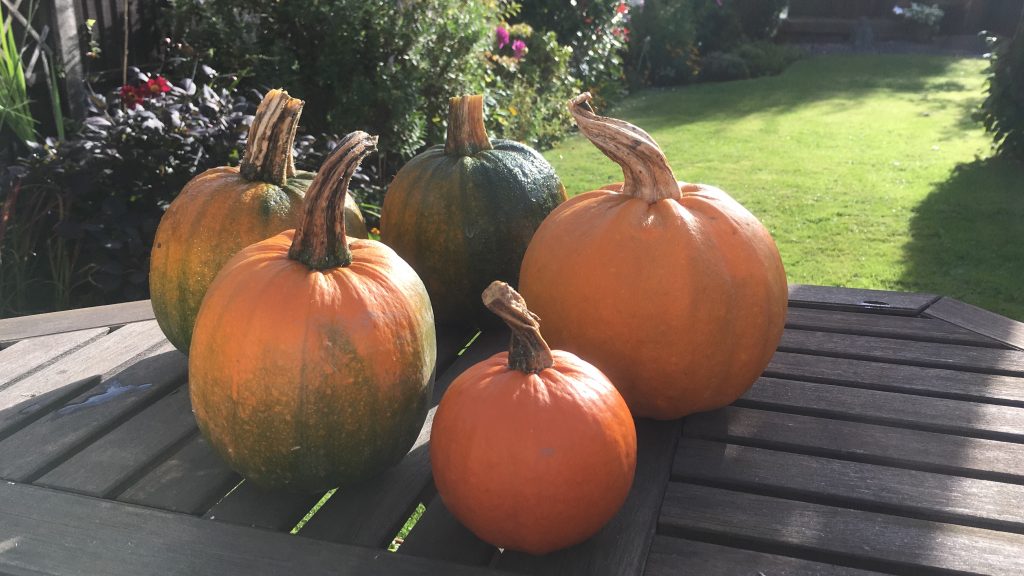
- Tidying borders is a key task, as annuals and perennials die back clear away leaves and stems, but remember to leave seed heads for the birds to enjoy.
- Adding compost or well rotted manure will then protect plants from the frost and snow, as well as adding back minerals.
- Clearing leaves from the lawn and paths is a priority to avoid slips and trips when they inevitably get wet.
- Lawns will be due their final cut – not too short for the winter and give the edges a sharp cut to redefine the shape.
- Autumn is the perfect time to plant spring bulbs in borders.
- Looking after the wildlife is very satisfying, so get bird feeders out set them around the garden. I tend to place them where they can be seen from the house windows and easily reach to refill through to spring.
- Have a general tidy up of plant supports, fix up any furniture for the winter and clean out the nesting boxes or bird baths if you have them.
- Early autumn is also the best time to move trees or shrubs to new positions and adding weed control fabrics to reduce the need for weeding next year.

Top tip #6 – Autumn afternoon sun can still be warm enough to sit out in the fresh air, so move a bench to a sheltered corner to relax and take in the view whilst the sun is still out. My dad used to love reading his paper in the garden.
Winter

The winter months can be a challenge when it comes to getting out in the fresh air and garden. I look forward to those gloriously crisp sunny days when i have no excuses to not get outdoors. Whilst there is limited action in the garden itself, there is still plenty to get involved with such as:
Top tip #7 – If you have a particularly creative member of the family into crafts (like I do), then knitted hats, scarf and gloves make fantastic Christmas gifts and will help keep them busy whilst they can’t get out so much.
- Spend some time repairing tools and tidying out the shed of old plant supports, packaging or general clutter.
- Illuminate the garden for winter with feature lighting or solar lights which are sensitive to wildlife, so the garden can continue to be enjoyed as the nights draw in.
- Adaptive tools are a great addition to the Christmas list, they come with easy grip handles, are lightweight and will make the garden increasingly accessible particularly for those with mobility challenges or arthritis.
- Winter is the time to order next year’s seeds and redesigning the layout or planting in the garden, based on what has inspired and been engaging over the summer.
- Visits to the garden centre don’t have to stop as many will stock up with Christmas decorations and indoor plants to have a wander around before a Coffee and a cake !
- There will still be some clearing out of the last of the autumn leaves from the borders on sunny days
- Don’t forget to keep the bird feeders topped up, particularly on cold days.
Top Tip #8 – Use the Cognect Screen to plan visits to local gardens, or sharing photos of the garden in full bloom is a great way enjoy the garden year round and prompt memories of the achievements which have been made.
Conclusion
The garden is a fantastic place to get some light exercise and fresh air for those in their golden years or living with health conditions.
Spring is a busy time and ideal for working together with a loved one who lives alone to prepare the garden for summer.
Summer is all about enjoying what you have created and growing fruit and veg to enjoy together at family BBQ’s or picnics.
Autumn brings a change of focus to planning and preparation whilst still offering a chance to enjoy the garden on warm days.
Winter doesn’t have to mean there is nothing to do outdoors, as tools and furniture can be repaired or on crisp days spend time clearing leaves from borders.
How do you spend you time in the garden? Please let us know in the comment box below, we would love to hear from you.
Written by: Nicky Macfarlane, Co-Founder of Cognect.com. Learn more about how Cognect is helping families to support their golden age parents to live independently in their own homes for longer.

2 Comments
Excellent article, lots of useful information, thank you
Great article – thanks for all of the ideas, going to print and keep in my office as a reference check for each season